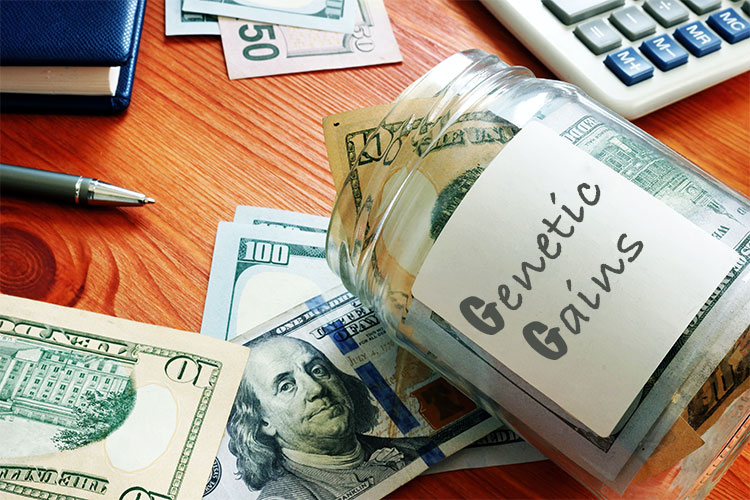
You’d be hard-pressed to find a dairy farmer who doesn’t want to breed healthier, more efficient cows. Though there are costs associated with a more detailed genetic program that can help achieve those goals, from registrations to semen costs to genomic testing, returns exist in the form of more productive animals.
How might a farm’s agricultural lender take this genetic investment into account when evaluating financing needs? That was a question posed during the July 7 Hoard’s Dairyman DairyLivestream as the panelists discussed the revisions to the Net Merit (NM$) index that will take effect with the August 2021 genetic evaluations. In other words: How might the “$” in “NM$” really pay off?
For perspective, Penn State University dairy cattle genetics professor Chad Dechow simply explained it like this: “We are in an industry that works on margins, and having better genetics gives you a better margin compared to your competitor herds that have poorer genetics.”
That margin likely consists of higher component production and the revenue that comes with it, as well as how a lender might view your management ability, Cornell University agricultural economist Chris Wolf pointed out.
Using genetic strategies such as NM$ selection allows you to build a herd that is better able to withstand changes in the dairy market. Of course, management ability is necessary to make use of available genetics, but it also goes the other way — without genetics, management will only go so far. “The gains in genetics are permanent, so you have the potential there,” emphasized João Dürr, CEO of the Council on Dairy Cattle Breeding,
Fewer costs
Wisconsin dairy farmer Lloyd Holterman has been using NM$ as the main selection index for his Rosy-Lane Holstein herd since it was introduced in 1994. He has kept with it for the last 27 years because of the payoffs the farm has seen.
“Let’s say, in one herd, the milking females average 400 NM$, and the other herd is at 0. That $400 will come back to you over the lifetime of each cow,” Holterman described. “That’s really critically important because you have to spend a lot of money trying to manage the problems out of these cows. To breed a better cow genetically so you don’t have the problems . . . that’s our goal.”
He noted that they have been able to go the last six years without using antibiotics in the milking herd, in part because mastitis incidence is so low. Fertility isn’t a problem, either, with pregnancy rates over 40%, and at the same time, production reaches over 30,000 pounds of milk and averaged 4.2% fat last year. He credits a large portion of those achievements to the herd’s genetic foundation.
“Genetics is probably the most underestimated part of dairy management,” Holterman believes. “Look at grain farmers; a bag of seed corn is really important to them, but we just seem to think that a dairy cow is a dairy cow. That couldn’t be further from the truth.”
To watch the recording of the July 7 DairyLivestream, go to the link above. The program recording is also available as an audio-only podcast on Spotify, Google Podcasts, and downloadable off of the Hoard’s Dairyman website.
An ongoing series of events
The next broadcast of DairyLivestream will be on Wednesday, July 21 at 11 a.m. CDT. Each episode is designed for panelists to answer over 30 minutes of audience questions. If you haven’t joined a DairyLivestream broadcast yet, register here for free. Registering once registers you for all future events.








